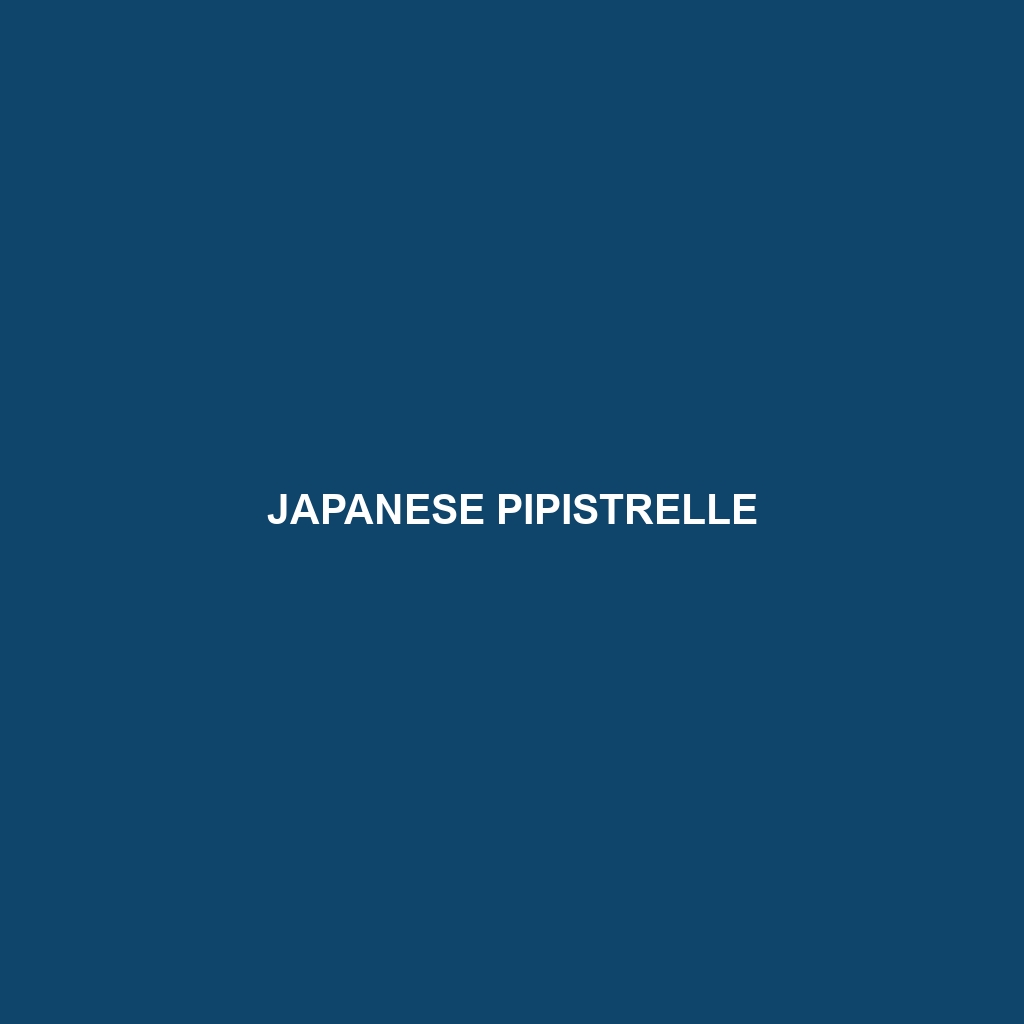Japanese Pipistrelle
Common Name: Japanese Pipistrelle
Scientific Name: Pipistrellus abramus
Habitat
The Japanese Pipistrelle is primarily found in Japan, particularly on the main islands of Honshu, Shikoku, and Kyushu. This bat species enjoys a diverse range of environments including deciduous forests, suburban areas, and agricultural lands. Their habitats are typically characterized by dense vegetation, which provides ample roosting sites and foraging opportunities.
Physical Characteristics
The Japanese Pipistrelle is a small bat, with a body length of about 3 to 4 inches (7.5 to 10 cm) and a wingspan of approximately 10 to 12 inches (25 to 30 cm). This species is known for its reddish-brown fur, which can appear grayish during certain seasons. One defining feature is its large ears, which are roughly one-third the length of its head, aiding in echolocation – crucial for their nocturnal lifestyle. Additionally, their face has a distinctive rounded shape, further aiding in easy identification.
Behavior
Japanese Pipistrelles are primarily nocturnal and exhibit a range of behaviors that include echolocation and social interactions during foraging. They are known for their agility in flight, often engaging in rapid maneuvers to catch insects mid-air. Their roosting habits are flexible; they can be found in tree cavities, under roof tiles, and in buildings, which makes them adaptable to both natural and urban environments.
Diet
The diet of the Japanese Pipistrelle mainly consists of small flying insects, including moths, beetles, and flies. They employ echolocation to hunt their prey, showcasing remarkable hunting efficiency. Their foraging strategies typically take place in open areas such as fields, parks, and near water bodies, making them effective pest controllers in their habitats.
Reproduction
The breeding season for the Japanese Pipistrelle generally occurs in late spring to early summer. After a gestation period of about 40 days, females typically give birth to a single pup, which they nurse until it can fly independently. Social structures are often observed, as mother bats will commonly roost together with their pups for mutual support during this vulnerable period.
Conservation Status
The Japanese Pipistrelle is currently classified as ‘Least Concern’ by the International Union for Conservation of Nature (IUCN). However, like many other bat species, it faces potential threats from habitat loss, climate change, and other human-induced factors. Conservation efforts are necessary to maintain healthy populations and habitats.
Interesting Facts
One fascinating aspect of the Japanese Pipistrelle is its ability to navigate using echolocation, which allows these bats to find food and avoid obstacles in complete darkness. Additionally, they are known to emit different frequencies depending on the environment, showcasing their adaptability.
Role in Ecosystem
The Japanese Pipistrelle plays a vital role in its ecosystem as a natural pest controller. By consuming large quantities of insects, they help maintain ecological balance, showcasing their significance in agriculture and reducing the need for chemical pesticides. Their presence is indicative of a healthy, functioning ecosystem, making their conservation a key focal point for environmentalists.
